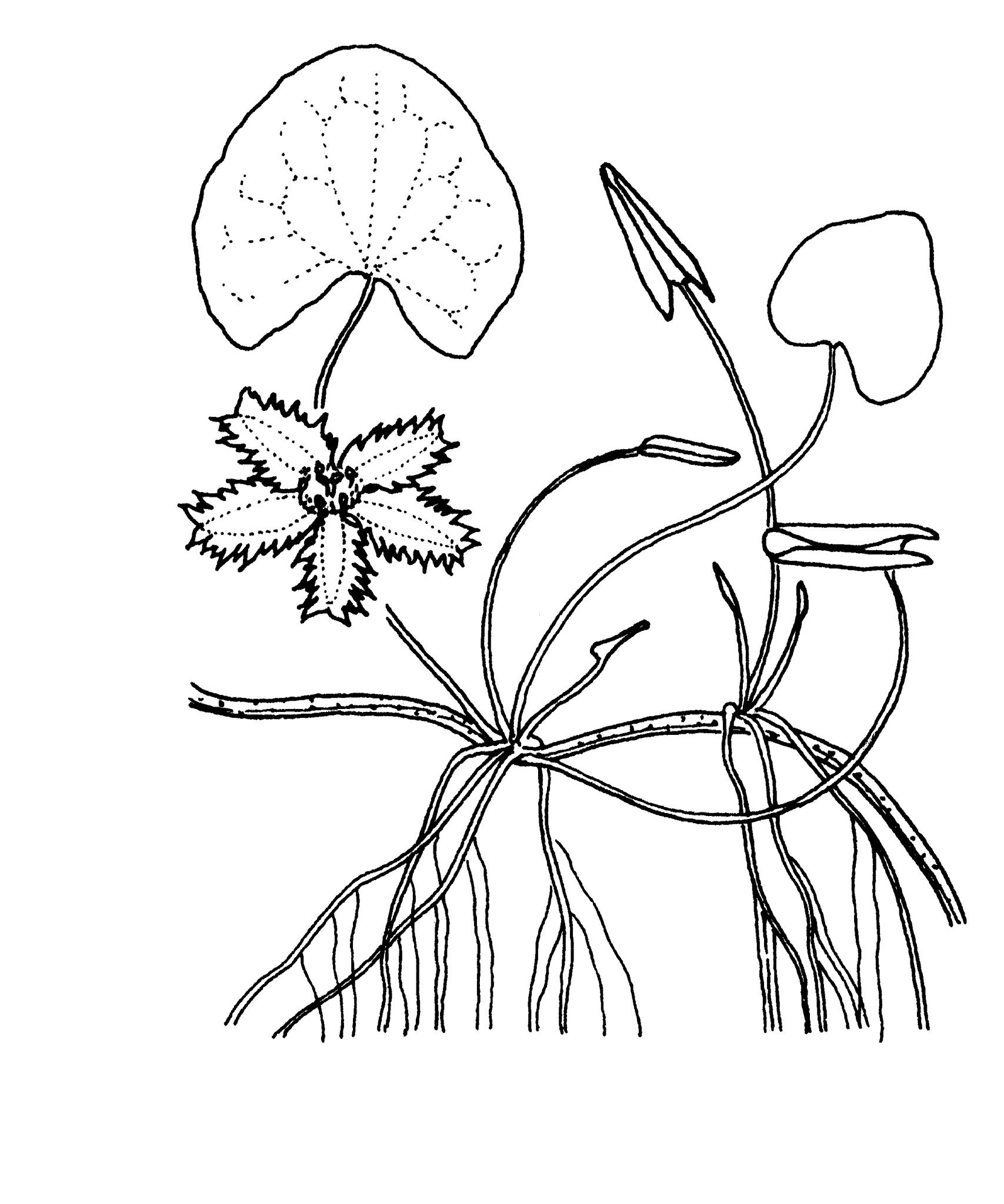
Annual or perennial aquatic tufted or stoloniferous herbs with air spaces in the stems. Leaves alternate or clustered together (3 leaflets in Menyanthes); stalks usually with a sheathing base; stipules absent or forming stalk wings. Flower clusters sometimes with only a few flowers or flowers solitary. Flowers bisexual, regular, generally opening for 1 day only. Sepals 5, united at the base. Petals 4-5, united at the base and generally fringed or crested, yellow, white or pink.
Stamens the same number as petals and attached to the tube; nectary disk often surrounding the ovary. Ovary superior or half-inferior, of 2 carpels but with 1 chamber and few to many ovules. Fruit a capsule or berry.
Members of this family, which is sometimes included in the Gentianaceae, are used horticulturally as aquatic and wetland herbs and occasionally in aquaria. A few species of Nymphoides have become environmental weeds.
Several species have medicinal uses, Menyanthes being the source of an anti-fever tonic and other beverages; an extract from the rhizomes is used as a treatment for arthritis.
Aquatic and wetland plants with air spaces in the stems; leaves cordate or peltate; flower petals mainly fringed, crested or wavy-edged.
5 genera and about 45 cosmopolitan species. Australia has 2 endemic genera with 30 species.
Source: (2002). Menyanthaceae. In: . Horticultural Flora of South-eastern Australia. Volume 4. Flowering plants. Dicotyledons. Part 3. The identification of garden and cultivated plants. University of New South Wales Press.
